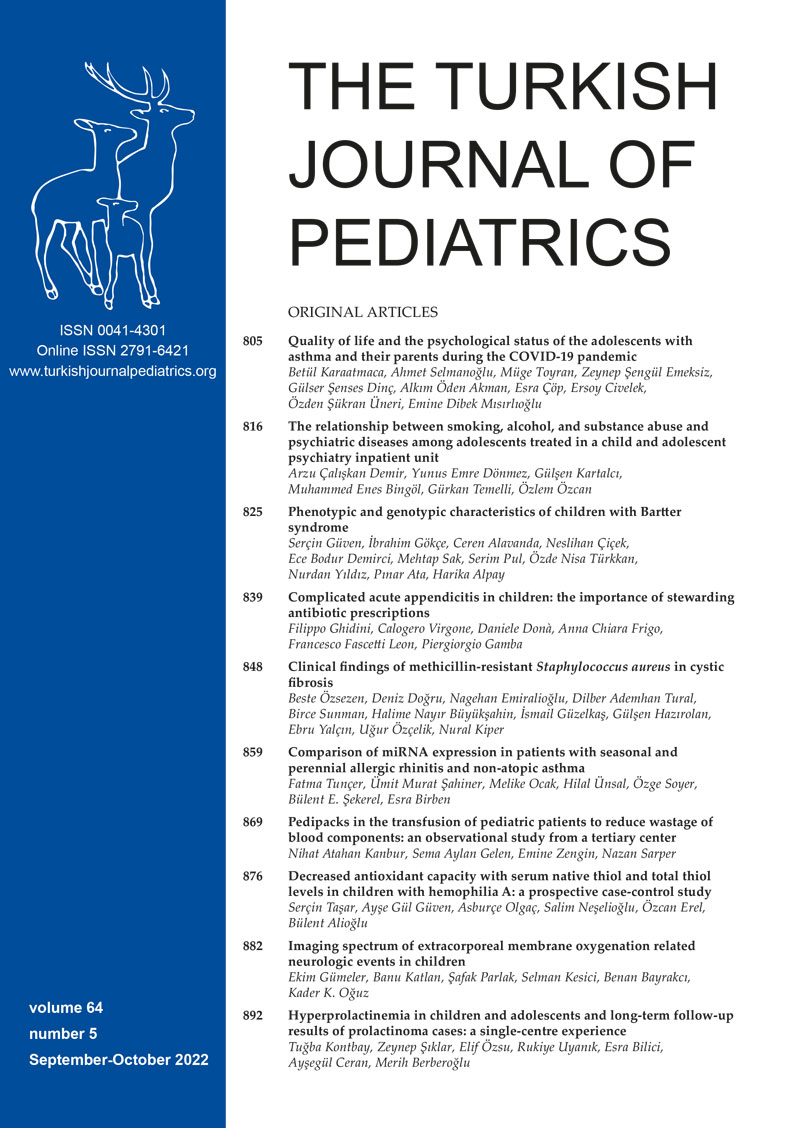Abstract
Background. Various studies, mainly conducted in adults, have examined the hormonal axis in primary empty sella (PES), and reported various forms of pituitary deficiencies. We report our experience with PES in pediatric patients in terms of pituitary function, associated impairments, and responses to treatment.
Methods. We reviewed 10,560 cranial and 325 pituitary magnetic resonance imagings (MRIs) performed at our university hospital between January 2010 and December 2020 and identified patients with PES. Patients with additional abnormal MRI findings, a history of cranial surgery or radiotherapy, autoimmunity, long-term use of chemotherapeutic or immunosuppressive agents or incomplete diagnostic evaluation were excluded. Clinical, radiological and laboratory evaluations were recorded.
Results. The study included 17 patients [9 girls, 8 boys; median age 12.4 years (7.25, 4.3 - 17)]. The median size of the pituitary was 2 mm (0.7, 1.2 - 3). Based on age-dependent pituitary height measurements, fifteen (88%) patients had pituitary gland hypoplasia. Five patients presented with short stature, two had both pubertal delay and short stature, and one had pubertal delay. Nine patients presented with neurological symptoms such as headaches, tinnitus, tics, and dizziness. Five short patients had growth hormone deficiency. None of the patients had hyper- or hypoprolactinemia, adrenal insufficiency, hypothyroidism, or diabetes insipidus. There was statistically no significant association between the size of the pituitary gland and the severity of hypopituitarism (p = 0.42).
Conclusions. The high incidence of pituitary dysfunctions ascertain that this entity should not be considered a normal variant but, should instead be carefully evaluated with appropriate basal and dynamic hormonal testing.
Keywords: hypopituitarism, magnetic resonance imaging, pituitary, primary empty sella
Copyright and license
Copyright © 2022 The Author(s). This is an open access article distributed under the Creative Commons Attribution License (CC BY), which permits unrestricted use, distribution, and reproduction in any medium or format, provided the original work is properly cited.














